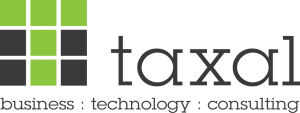I attended PTC’s LiveWorx event in June. PTC’s investments and product announcements over recent times are, to me anyway, a commitment to IoT that’s beyond that of many of their competitors. There again, PTC’s ‘old’ competition aren’t necessarily their new ones, especially in the rapidly evolving IoT market.
For those not in the know, PTC’s one of the few companies that’s able to support IoT development at multiple levels of the product and service ‘stack’. In other words, at multiple points in and between physical product, embedded electronics/software through to (certain areas of) development commercial and service applications (and analytics).
Their CEO, Jim Heppelmann often mentions the research they’ve involved in with Michael E. Porter (economist, researcher, author, advisor, speaker and teacher at Harvard Business School). If one agrees on his observations highlighting the convergence of physical and digital worlds (which I do), PTC’s IoT strategy makes sense. More to the point, Heppelmann’s observation that Data is the ‘new oil’ resonates with many in the market. Particularly those who’re active in areas of (machine) intelligence, connected products and associated insights and analytics. Just to be clear, PTC’s IoT transformations and strategies are works in process. Their ongoing revenues and profits remain of keen interest. Their many (some very recent) acquisitions and increasingly subscription-based (product and service) portfolios have yet to play out in terms of financial returns for the business.
As I listened to a couple of promotional video interviews made during the event I thought to myself, “some excellent observations”. “Very focused on IoT, connected products, services and importantly, the (mainly ROI/monetary) value that the IoT/connected products/services paradigm can bring to suppliers and user/customers”. But what was missing to me, listening to these interviews, was the train of thought regarding the situational ‘experiences’ that result from IoT’s application and use.
Take, the (over-used) example of the iPhone. It’s certainly not low-cost and it’s not (any more) the most prolific or (arguably) functional smartphone in the market. That accolade (probably) goes to Android, in my opinion. But it’s a great phone, and importantly the experiential proposition of the device and its broader ecosystem together make it stand out from the crowd.
IoT allows vendors to create products and services that deliver new, connected, dynamic experiences in manufacturing (a la Industry/industrie 4.0); Creating (company, site, process, products and service) business experiences that enhance a manufacturer’s agility and effectiveness. To users, it delivers (hopefully attractive) experiences that intertwine digital insight, and product form and function; connecting real-world inputs, outputs, control and analytics to present (much) more immediate, situationally aware and insightful products and services.
From what I’m hearing in the market, many (companies) still don’t understand how to capitalize on the potential of the IoT. Especially for those who don’t have the resources to investigate the myriad of options available to them for product and (new) service development. Many of these (companies) are still trying to understand if (on IoT’s use) it has a compelling proposition. Is it a must-have, nice to have, or is it unimportant? Is it a money maker or saver? Does it offer a product or service experience that’s competitively differentiating, or does it allow one to defend the business against competitors or start-ups? What’s hype and what’s practical reality. Is it worth investing in and importantly, what first steps to take?
I feel there’s much more to be done to help educate and inform (as opposed to hype and acronym-ize). Those ‘in the know’ often assume that they’re well understood, but I’d suggest that, in reality they’re missing a trick, especially in educating the smaller business. In such a rapidly growing ecosystem I suggest that there are more companies than one assumes that just need the basics as a first step …would others agree?
* CAD/PLM/ALM/SLM/AR/IoT = those containing one or more that includes f/e Computer Aided Design, Product Lifecycle Management, Asset Lifecycle Management, Service Lifecycle Management, Augmented Reality, Internet of things
